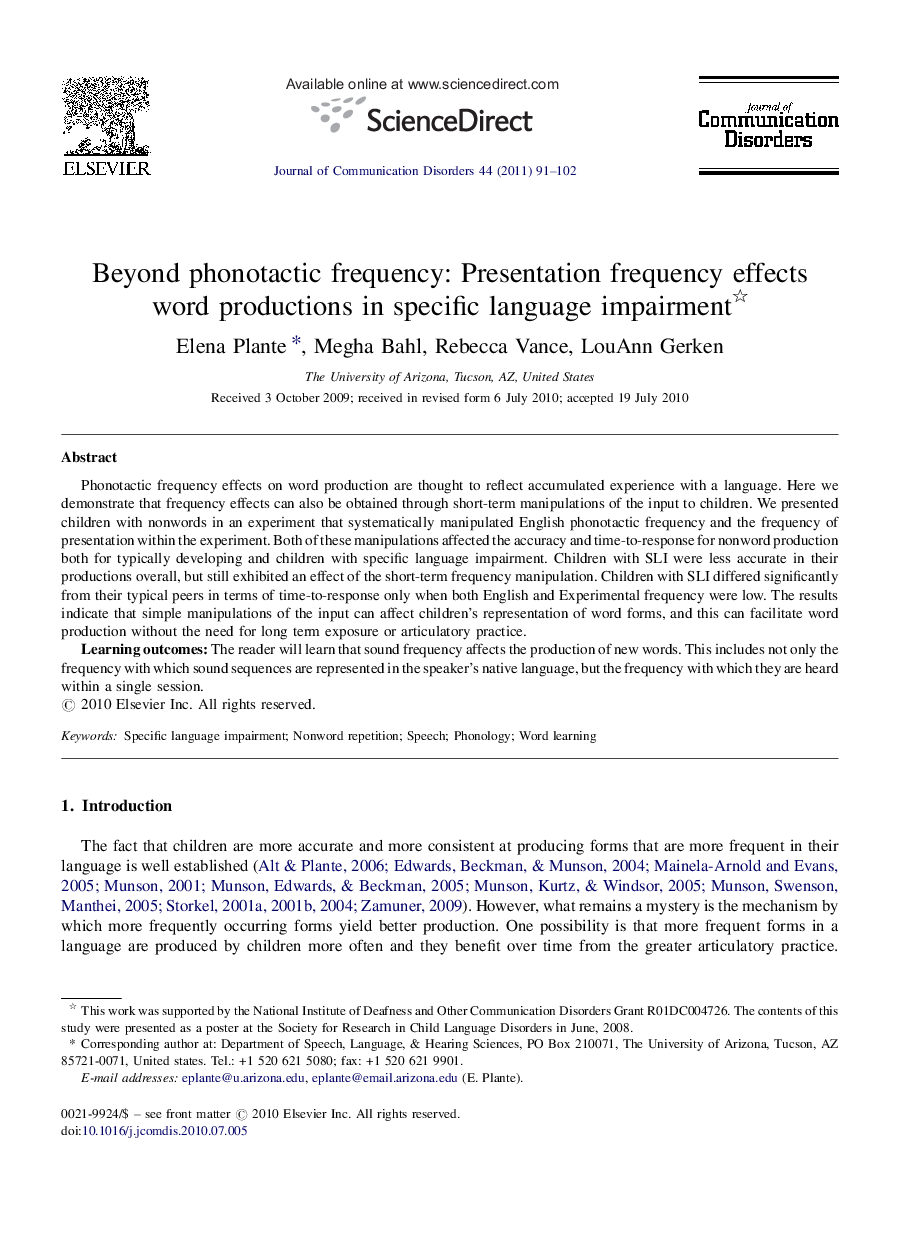| Article ID | Journal | Published Year | Pages | File Type |
|---|---|---|---|---|
| 910951 | Journal of Communication Disorders | 2011 | 12 Pages |
Phonotactic frequency effects on word production are thought to reflect accumulated experience with a language. Here we demonstrate that frequency effects can also be obtained through short-term manipulations of the input to children. We presented children with nonwords in an experiment that systematically manipulated English phonotactic frequency and the frequency of presentation within the experiment. Both of these manipulations affected the accuracy and time-to-response for nonword production both for typically developing and children with specific language impairment. Children with SLI were less accurate in their productions overall, but still exhibited an effect of the short-term frequency manipulation. Children with SLI differed significantly from their typical peers in terms of time-to-response only when both English and Experimental frequency were low. The results indicate that simple manipulations of the input can affect children's representation of word forms, and this can facilitate word production without the need for long term exposure or articulatory practice.Learning outcomes: The reader will learn that sound frequency affects the production of new words. This includes not only the frequency with which sound sequences are represented in the speaker's native language, but the frequency with which they are heard within a single session.
